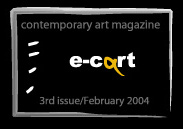









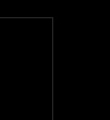
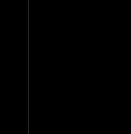



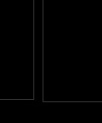

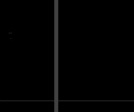



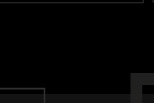
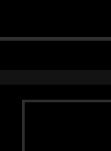




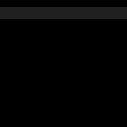
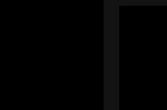










Without attempting a description of the art educational system in Iasi, and tending somehow to prescribe certain solutions in order to balance the relationship between the curricular ideal and the need to maintain contact with reality, I shall build a minimal model of edification in an institution that should provide with the circumstances favourable to the inventing of new ways of life.
Locally, there are two institutions that allow formally the studying of aesthetics, art theories and art practices. On the one hand, "Al.I.Cuza" University hosts within its Philosophy Faculty, both at the Philosophy and at the Sociology Departments, a series of courses on the art issues, among which Aesthetics, Philosophy of Art, or Aesthetics and social design. Obviously, most of the courses are inadequate to the discourse of the beginning of 21st century, and, obsolete as they are, they'd rather exercise metaphysics than analytics, or even social critique, both these last two predominating in the manifesting of didactic will in the academic discourse from the Anglo-Saxon and part of the continental world. Still, the problem is not the preference for one academic position or another, but depriving the students of the right to work with recent information.
On the other hand, the Arts University "G. Enescu", within its
Faculty of Fine Arts, Decorative Arts and Design, offers itself courses of
aesthetics' theory, that have mostly succeeded in experimenting important
texts from the contemporary aesthetics trend, however it does not offer one
the possibility to refer to a complete bibliography.
Anyway, it's not correct (politically?) to ask for a simultaneity between
the editing of a new book or magazine in the West and your own academic obligativity
to put yourself to date with the assertions contained into this chasing of
the new. The existing financial ressources of the institution are used in
a more aesthetic purpose - that of embellishing the buildings where the students
are being taught to respect the subject's history and repeat it with humbleness.
In what concerns the practise of art, its endemic excuse is that it preserves its authenticity without letting itself contaminated by any other form of "illegitimate" art, that would compete for the status of value. The traditionalism dominates with authority through the damaging model of the easel master, whose instrument for torturing minds is the paintbrush. Any art without paintbrush or chisel, without oil colors and watercolors or stone and metal is anathemized. Under these circumstances, the courses have been thrown with the dice.
This is the inner paradox of the art educational system in Iasi: on the theoretical ground - freedom without knowledge; on the practical one, constraint without art. The difficulty is constant, and any introduction of a changing element could distort the system, forcing it to strenghten itself. What would then be the therapy?
One of the methods of regenerating the local educational system would be
the encouragement of creativity and its argumentation. If we are confronting
ourselves with the physical impossibility of acquiring the latest bibliography,
then we should be offered the appropriate conditions to produce our own art
theories, our own aesthetic presuppositions (the aesthetics taken in its general
meaning, since the philosophical aesthetics has completed its historical mission),
our own artistic attitudes. We are not talking here about the growing risk
of ignoring the Western academic productions, but about the experimentation
of a consciousness of the vitality inherent to a contingent independency.
More than this, another solution for a releasing of the art practice would
be the "import" of courses from other Universities, that would thus
create an interdisciplinary matrix, in order to stimulate a complex of atypical
decisions. Such an example would be the introduction of some architecture
studies, to offer solutions of using the spaces and communicating with the
different sense-providing recesses of the public buildings.
Other courses could treat the issue of: the new media, technology, urban life
and lifestyle, geo-politics and cultural anthropology, history of ideas and
social psychology, cultural studies and cultural management etc., with a relevance
for the practice of art - these should be conceived by lecturers after some
specialised research.
The students could have dissertations on virtual exhibitions from their portfolio of projects. They would understand that the coherent sketch of a work could itself be a work of art. From an anticipatory perspective, we may not have here to deal with a pleading for a suppressed uchronism. In fact, any didactic project is situated on a philosophical ground. I am not to compensate for an anomaly with a treaty on education, be it in the manner of Rousseau. We are left, however, with the need to train our attention for any kind of academic acting that solicits a constructive communication in order to test inter-subjectively any reaction to tergiversation.
With no claim to exhaustibility, I conclude here without developing this model, being not concerned that the institution-patient would ignore any un-tested recipe, but certain that for each model there is a place within someone's archive of sensitivity.
Catalin Gheorghe, theoretician and analyst of contemporary art, Ph. D. student
in Aesthetics and Philosophy of Art, member of the vector> group, Iasi
|
|
 |
|
|
||||||||||||||||||||||||||||||
|
|
 |
|
 |
 |
|
||||||||||||||||||||||||||||
 |
 |
 |
|
||||||||||||||||||||||||||||||
 |
 |
 |
|
||||||||||||||||||||||||||||||
|
|
 |
|
|
||||||||||||||||||||||||||||||
|
|
|
||||||||||||||||||||||||||||||||
|
|
 |
 |
|
||||||||||||||||||||||||||||||
|
|
 |
 |
|
||||||||||||||||||||||||||||||
 |
 |
 |
|
||||||||||||||||||||||||||||||
 |
|
||||||||||||||||||||||||||||||||
|
|
|
||||||||||||||||||||||||||||||||
 |
 |
|
|
|
|
 |
|
||||||||||||||||||||||||||
|
|
|
|
|
||||||||||||||||||||||||||||||
 |
 |
|
|||||||||||||||||||||||||||||||
|
|
|
||||||||||||||||||||||||||||||||
 |
|
 |
|
||||||||||||||||||||||||||||||
 |
|
|
|||||||||||||||||||||||||||||||
 |
|
||||||||||||||||||||||||||||||||
|
|
 |
|
 |
 |
 |
|
|||||||||||||||||||||||||||
 |
|
||||||||||||||||||||||||||||||||
|
|
|
||||||||||||||||||||||||||||||||
|
|
 |
 |
|
||||||||||||||||||||||||||||||
 |
 |
 |
|
||||||||||||||||||||||||||||||
 |
|
||||||||||||||||||||||||||||||||
|
|
|
||||||||||||||||||||||||||||||||
|
|
|
||||||||||||||||||||||||||||||||
|
|
|
|
|
|
|
|
|
|
|
|
|
|
|
|
|
|
|
|
|
|
|
|
|
|
|
|
|
|
|
|
|
|
|